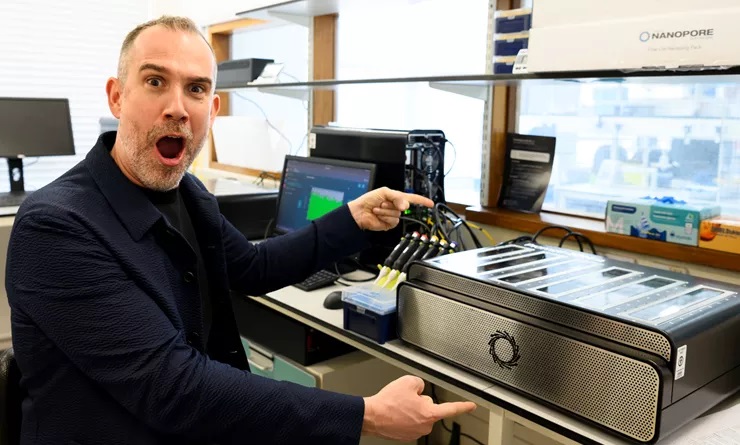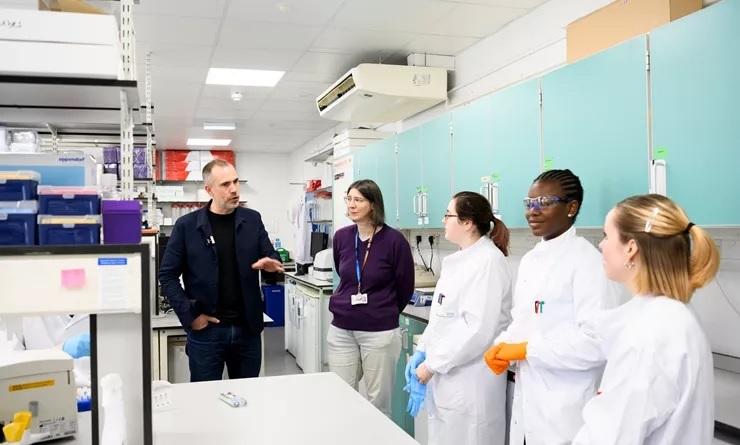Dr Xand explores the BioResource labs
We welcomed Dr Xand, one of our D-CYPHR ambassadors, to our laboratory to give him a tour of the facilities and showcase the new machine that makes cutting edge Long Read Sequencing (LSS) technology possible. The team were able to tell him more about the Rare Diseases BioResource research successes over the years and it was fantastic to be able to show Xand the technology we use to decode DNA.

Watch the video to hear Dr Xand explaining the importance of the D-CYPHR programme.
What is Long Read sequencing?
At the BioResource, we are testing a new technology called Long Read Sequencing to see if it will help find a diagnosis for a variety of conditions. So far, all DNA samples used by this equipment are from people with rare genetic diseases.
There have been many recent advances in DNA sequencing technologies. The old method consisted of generating short sections of DNA and comparing them to the reference genome to look for variations that might cause disease. There are disadvantages to this approach, it is particularly expensive and a much longer way to find out information. Approximately only 25% of people get a diagnosis using this approach combined with scientific knowledge.
Long Read Sequencing generates bigger sections of a sequence so that we can put very similar looking sections in the right places and see a variation that might have been missed with the previous technology. All of the samples that are sequenced in this way become part of a library for researchers who study many different health conditions. This is to help determine what variation is normal between samples and what might cause a disease.
What happens when you send your spit sample back to us?
When returning your spit sample, they arrive at our central laboratory in Milton Keynes. The samples are given basic genetic analysis called genotyping and then stored safely for future studies.
D-CYPHR samples help towards many different types of studies, from rare diseases to mental health. Over 70% of rare diseases begin in childhood, and 72% of rare diseases have a genetic component, which is why genetic research is so important.
Kathy Stirrups, Head of Sample Management said:
"We are interested in the genetics of rare diseases, many people who have rare diseases are children, and we are interested in getting those children a diagnosis faster by learning more about the variation in people’s genomes behind their diseases."
Help children’s health research
D-CYPHR (DNA, Children + Young People’s Health Resource) needs volunteers both with and without health conditions to better understand childhood health. Any child or young person aged 0-15 from the UK can join the programme.
We need to learn a lot more about childhood health. To do this, we also need to understand how genetics and environmental factors affect children as they grow and develop.
Research into the origins of disease has revealed that most diseases start in childhood, yet most health research is carried out in adults. We are missing clues and opportunities to help children and the adults they will become.
To get involved, all you have to do is fill out a health and lifestyle questionnaire and spit in a tube. It’s easy to play a part in helping children’s health research.



